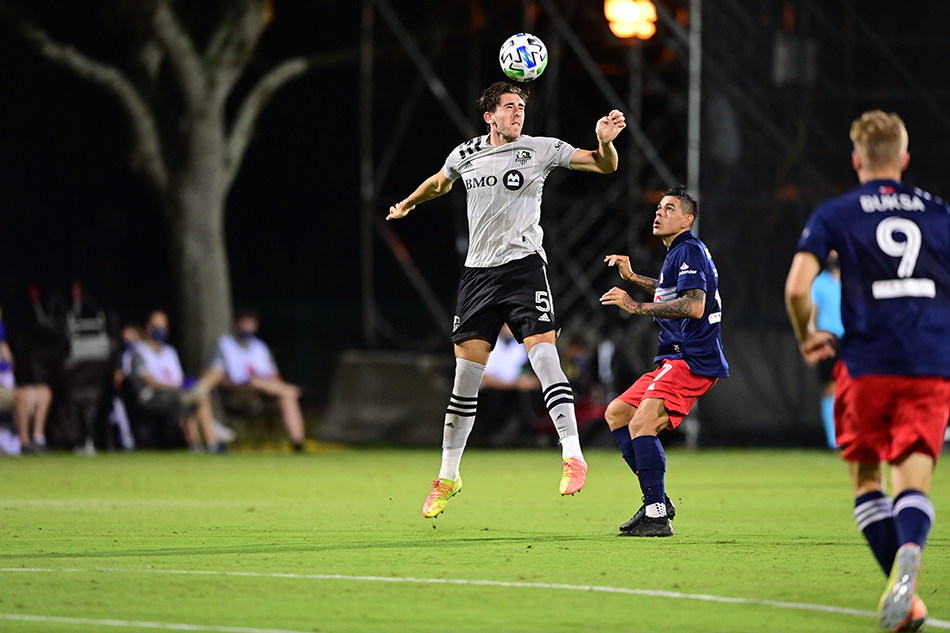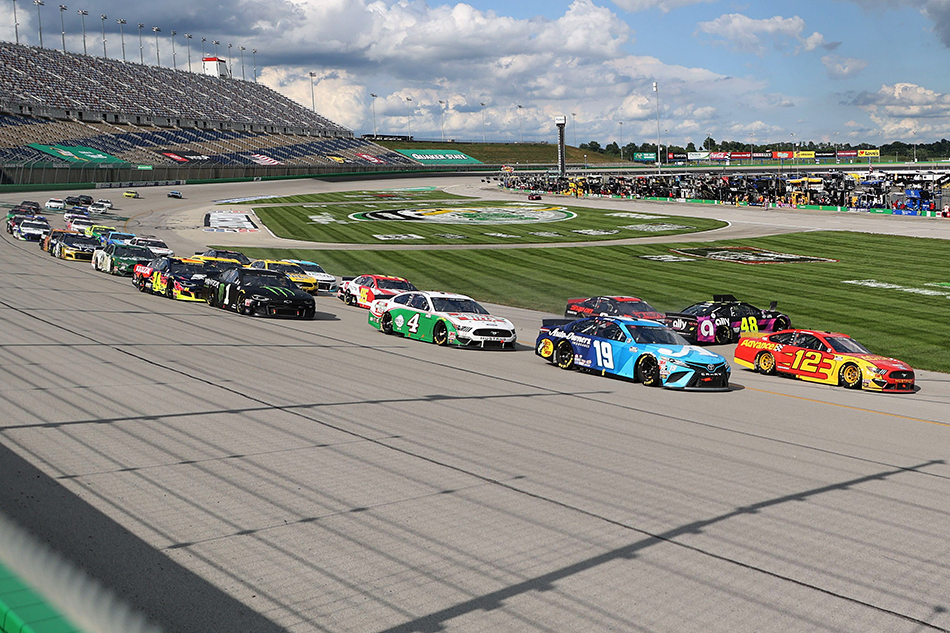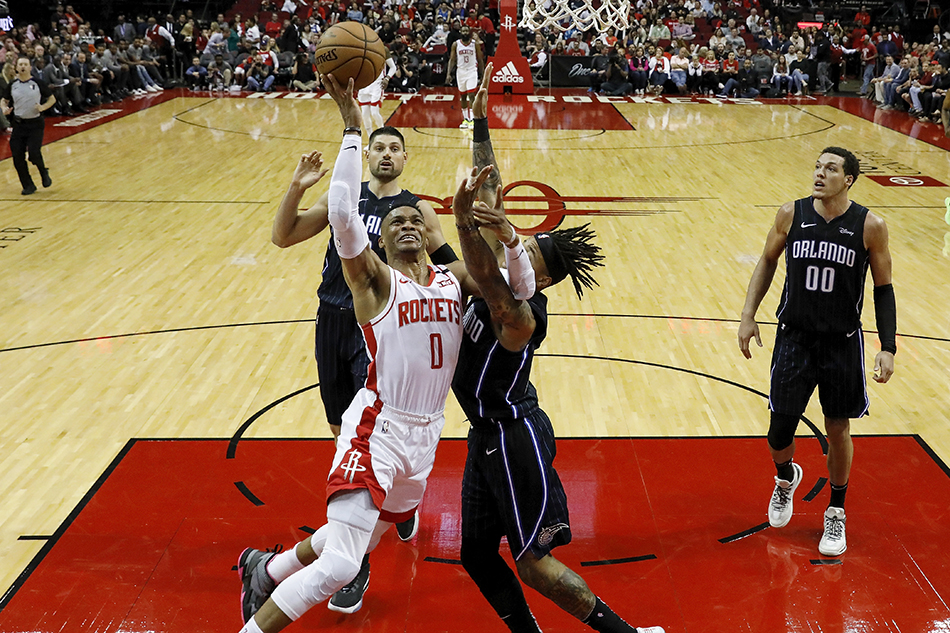Cover Story: Clearing the Field
Sports programmers step up to pandemic production challenges

In the 75th minute of the National Women’s Soccer League’s June 27 Challenge Cup match, North Carolina Courage forward Debinha scored a header into the Portland Thorns FC goal to the excited roar of the crowd heard live on CBS. But there were no fans at Zions Bank Stadium in Herriman, Utah, where the game was played: Producers and the league added crowd noise to provide more ambiance to what was the first U.S. pro game played since the coronavirus sidelined the sports world in March.
Since then, Major League Soccer and the National Premier Soccer League (U.S.) have joined NASCAR and some other motorsports; pro boxing; mixed martial arts outfit UFC and other sports, including golf, in returning to live action, albeit with restrictions that have forced networks to drastically alter how they produce and televise live sports to anxious fans. Major League Baseball, the National Basketball Association and the National Hockey League are hopeful they can follow their lead and relaunch later this month.
“Every sport, and the scale of that sport, demands a different way of thinking,” Fox Sports senior VP of field & technical operations Michael Davies said. “But it’s all for the same goal: to keep people safe and to keep the virus from spreading or impacting what you’ve already started.”
RELATED: Bubble Life in Las Vegas
TV sports producers have responded with innovative approaches to producing live telecasts during the pandemic, maintaining a delicate balance between delivering high-quality, entertaining telecasts while keeping production staff safe.
“At first it was a challenge, but we said, let’s open up our eyes and embrace this and use the technology out there to be more remote in how we produce events,” CBS Sports executive producer and senior VP production Harold Bryant said.
COVID-19 has altered and continues to alter the playing field of professional sports. Most events are being conducted without crowds to limit potential virus spread, and network production executives have said they must produce games with sometimes less than half of the typical complement of on-site production personnel.
Broadcasting & Cable Newsletter
The smarter way to stay on top of broadcasting and cable industry. Sign up below
“We’ve basically been able to reduce our footprint personnel-wise almost in half on a golf event on site,” Bryant said. “If we do a golf event from Ohio, for example, we have [production] people in Stamford [Connecticut], New York, Burbank [California], New Zealand and Houston. What this has done is advanced our use of technology and remote production.”
Production Moves Off-Site
Fox Sports’ Davies said that the network was able to move a fair amount of on-site production for NASCAR coverage, which restarted in May, to its Los Angeles production facilities to limit the amount of producers at the track.

“People were controlling machines that were [at the venue], so that limited the amount of people that needed to travel,” he said. “We were already working on that, but certainly COVID has accelerated that.”
Networks have had to come up with creative ways to use robotic cameras and drones to replace camera people. ESPN is looking to provide unique camera angles and enhanced technology for its MLS and NBA coverage, VP of event and studio production Stephanie Druley said in a July 7 interview posted to ESPN’s press site.
“We will have the ability to use drones at MLS and for NBA exterior shots,” Druley said. “The NBA production team will have rail cameras at each venue and access to Second Spectrum [machine learning-based video tracking] elements, among other technologies. For safety reasons, we will also utilize an unusual number of robotic cameras for both sports.”
Along with the challenges of placing personnel at the venues, executives said they also have to prepare for a glut of sports events as sports organizations attempt to make up for lost time.
On July 4, for instance, IndyCar and NASCAR both presented races from the same track, the Indianapolis Motor Speedway. The historic happening forced NBC to juggle limited production crews across two different races running back-to back, according to NBC Sports executive producer Sam Flood.
NBC produced the first race, the IndyCar GMR Grand Prix, from a production truck in the infield, then switched its signal to a production truck in Charlotte, North Carolina, to produce the NASCAR Xfinity Series Pennzoil 150 at the Brickyard race immediately afterwards.
“It is complex to bring back the number of cameras we brought to Indianapolis back to Charlotte and then to make them all work,” Flood said. “You have to become more creative. It’s a fascinating process, and it has forced everyone to step back and think differently.”
ESPN has had to juggle multiple UFC and boxing fight cards over the past couple of months while attempting to maintain a virus-free environment for its production staff. The network’s summer boxing series, in particular, has been challenging (see sidebar). More than 40 ESPN production and camera crew staff lived in a virtual bubble within the MGM Grand Hotel in Las Vegas, as the network produced more than 50 fights over a five-week period ending July 21, according to ESPN boxing producer Jim Zirolli.
Room for Creativity
With no crowds to contend with, the network was able to add cameras that otherwise would have interfered with the audience’s view of the fight to provide additional angles, Zirolli said. “We’ve been really creative in the placing of cameras with fewer people in the venue,” he said.

The new paradigm has allowed ESPN to experiment with different approaches to fight cards, including offering co-main event fights as the opening bout, rather than waiting to air matches later in the live telecast. Typically, the more attractive fights are placed last on the card in an effort to maximize the live audience.
“Here, we’re not worried about that because we don’t have any live fans,” Zirolli said. “But if I tell viewers that the first fight on the telecast is the second-best fight on the card, viewers may tune in earlier.”
At press time, Zirolli said that no ESPN staffers contracted the virus while in the bubble, although he said that the odds of keeping people virus-free diminish over time.
“There’s really no way around it,” he said. “No matter what you do, there has to be a willingness to accept some changes. You’re not going to go there and nobody’s going to get it. The question is then, how are you going to deal with it, and what am I going to do when someone gets it?”
As the major professional leagues gear up for their return, the virus is affecting who gets to play. MLS began its World Cup-style “MLS Is Back” tournament on July 8 and, at press time, had already lost two of the 26 teams due to infections among players and coaches.
The NBA is scheduled to resume its 2019-20 season on July 30 even as several top players, including Victor Oladipo of the Indiana Pacers and Washington Wizards star Bradley Beal, are sitting out due to virus concerns. The league last week reported that overall, since July 1, 19 NBA players have tested positive for the virus, including Houston Rockets point guard and former league MVP Russell Westbrook, who is quarantining outside the bubble but expects to rejoin the team.
MLB and the NHL have also had a number of players test positive for the virus as they move toward resuming play on July 23 and Aug. 1, respectively. Less uncertain is the start of the college football season, after the Ivy League announced it will cancel all fall sports, and the Big Ten and Pac-12 said they would only play teams within their respective conferences.
Network executives said they’re gearing up to produce game telecasts despite all the uncertainty. “The learnings that we’ve had from other sports have allowed us to change the way we’re doing productions on some bigger shows,” NBC’s Flood said. “As Sunday Night Football looks at its upcoming season, more and more content will be created in the [production] building.”
Will Virtual Crowds Roar?
Executives said there are still some questions surrounding the production of MLB, NHL, NBA and NFL games, including whether artificial crowd sounds will be piped in. NWSL and MLS soccer games feature enhanced audio; U.S. telecasts of European soccer matches have also featured crowd noise.

NBC Sports’s NFL and NHL coverage will most likely rely on the natural sounds coming from the fields and arenas rather than piping in simulated crowd sounds, Flood said. “We’re looking to enhance the audio of the players and what’s going on the field and ice, rather than bringing in artificial noise,” Flood said. “If we find that it sounds hollow or empty we might adjust, but right now we’re big believers in the sounds of this incredible sport.”
Added CBS Sports’s Bryant: “We’re testing enhanced crowd noises in the NWSL and we’ll test it and see if it could work in the fall. If college football and the NFL are playing without audiences, we’ll see if that works.”
The pandemic has posed a multitude of challenges in delivering live sports programming, producers said, but it has also yielded new production strategies that could remain in place if and when the sports arena returns to normal.
“We learned a lot about how well technology can facilitate creativity in terms of logistics and distributing production,” Fox Sports’s Davies said. “We’re definitely seeing a sea change in how things are being produced.”
Added Bryant: “The one silver lining in this whole COVID-19 era is that we’re going to find better ways to do production.”
R. Thomas Umstead serves as senior content producer, programming for Multichannel News, Broadcasting + Cable and Next TV. During his more than 30-year career as a print and online journalist, Umstead has written articles on a variety of subjects ranging from TV technology, marketing and sports production to content distribution and development. He has provided expert commentary on television issues and trends for such TV, print, radio and streaming outlets as Fox News, CNBC, the Today show, USA Today, The New York Times and National Public Radio. Umstead has also filmed, produced and edited more than 100 original video interviews, profiles and news reports featuring key cable television executives as well as entertainers and celebrity personalities.

